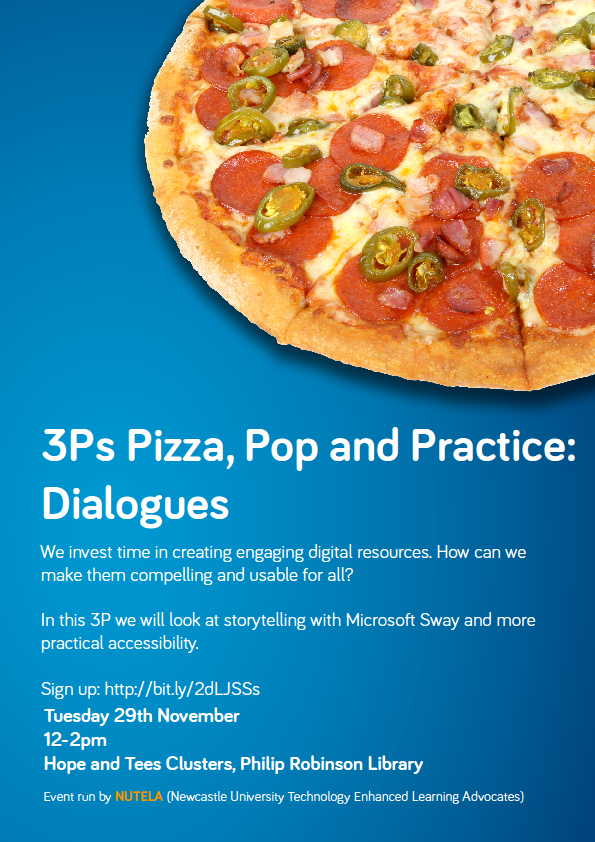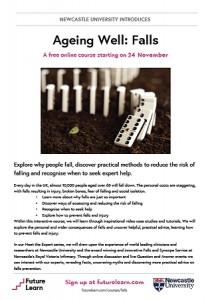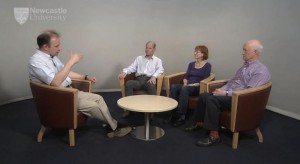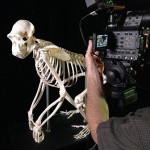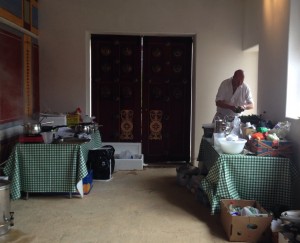
Professional chef John Crouch joined us at Arbeia in South Shields the day we filmed the 5 videos that make up the fourth century banquet in week 5 of Hadrian’s Wall: Life on the Roman Frontier. John put together a menu inspired by Roman recipes in order to help us visualise what a Roman banquet might have been like in the summer dining room of the Commanding Officer’s House.
We blogged a couple of recipes earlier as a teaser for this week. And now, here are the rest of the recipes which make up the Roman inspired menu which John devised for the event. He very kindly agreed that we could share them with you.
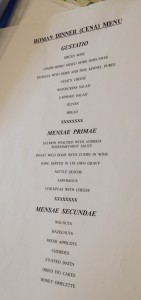
LIVER, CHICKEN, AND ONION
1 medium onion, chopped
1 cup chicken stock
2 tablespoons olive oil
½ cup white wine
1 cup pork and chicken livers, sliced
3 chicken breasts, sliced
Sauce
dash of pepper
½ teaspoon celery seed (or lovage)
1 cup chicken stock
¼ cup white wine
flour
In a saucepan, soften the onion in the olive oil. Add the sliced livers
and chicken (or meats from small birds). Add the white wine and stock
and cook for about 30 minutes until the liver and chicken are cooked.
When the meats are almost cooked, combine the pepper, celery seed (or
lovage), stock, and white wine for the sauce. Add a little liquid from
the casserole dish and bring the sauce to a boil. Pour the sauce over
the meats. Bring to a boil, thicken with flour if you wish, and serve.
GRATIN OF MUSSELS WITH PESTO
36 large fresh mussels, scrubbed and debearded
7 tablespoons dry white wine
4 tablespoons parsley, finely chopped
1 clove garlic, finely chopped
2 tablespoons fresh white breadcrumbs
4 tablespoons olive oil
chopped fresh parsley, for garnish
crusty bread to serve
For the pesto
2 garlic cloves, chopped
½ teaspoon salt
100g (4oz) basil leaves
25g (1oz) pine nuts, chopped
50g (2oz) freshly grated Parmesan cheese
120ml (4floz) olive oil
Put the mussels in a pan with the wine, put on the lid and shake over
high heat for 3-4 minutes until the mussels have opened. Discard any
that remain closed.
As soon as the mussels are cool enough to handle, strain the cooking
liquid and keep it for another recipe. Discard the empty half-shells.
Arrange the mussels in their half-shells in a single layer in four
individual gratin dishes. Cover and set aside.
To make the pesto, put the chopped garlic and salt in a mortar and
pound to a purée with a pestle. Then add the basil leaves and chopped
pine nuts and crush to a thick paste. Work in the Parmesan cheese and,
finely, gradually drip in enough olive oil to make a smooth and creamy
paste. Alternatively use a food processor.
Spoon pesto over the mussels placed in the gratin dishes. Mix the
parsley, garlic and breadcrumbs. Sprinkle over the mussels. Drizzle
with the oil.
Preheat the grill to high . Stand the dishes on a baking tray and grill
for 3 minutes. Garnish with basil and serve with crusty bread.

WATERCRESS SALAD
watercress
1 tablespoon fish pickle
3 tablespoons olive oil
1 tablespoon cider vinegar
¼ teaspoon ground pepper
pinch of cumin
2 tablespoons hazel nuts, chopped
Use fresh watercress and serve it as a salad in a dressing made by
combining the fish pickle, olive oil, vinegar, pepper and cumin.
Garnish with chopped nuts.
ROMAN FISH SAUCE (GARUM)
400g (13oz) sea salt
700ml (24floz) water
1 jar of salted anchovies (100g (4oz))
a pinch of dried oregano
1 teaspoon sapa *
Dissolve the salt in the water over low heat. Add the anchovies to the
salted water with the oregano and sapa. Simmer for 20 minutes and then
leave to cool. Strain the garum through a fine sieve or muslin cloth
and store in a jar ready for use.
*SAPA
1lt (2pts) red grape juice
Pour the grape juice into a saucepan and boil vigorously whilst
stirring until one third remains. Leave to cool and decant into a
sterilised bottle.
ROAST WILD BOAR WITH CUMIN IN WINE
2-3kg (4-6lb) boar roast
Marinade
1 teaspoon salt
water
1 teaspoon myrtle berries, or juniper berries
2 teaspoons peppercorns
2 teaspoons cumin
Sauce
2 teaspoons honey
125ml (¼pt) pork or chicken stock
65ml (1/8pt) red wine
½ teaspoon ground pepper
roasting pan juices
Wipe the roast dry. Immerse for 24 hours in a marinade of salt, water,
myrtle or juniper berries, peppercorns, and cumin. Roast uncovered in a
180ºC (350ºF/Gas mark 4) oven for 30 minutes per 400g (pound).
To make the sauce, combine pepper, honey, stock, and pan juices. Bring
to a boil and simmer for 30 minutes. Serve with the slices of meat.
FISH POACHED WITH ANISEED
1kg (2lb) fish fillets
water
1 teaspoon coriander seed
pinch of aniseed
sharp white vinegar
Put the fish fillets in a frying pan. Barely cover with water, and
season with coriander and aniseed. Bring to a boil and simmer for about
10 minutes. Discard the liquid and serve the fillets with a sprinkling
of vinegar.
ROSEMARY-MINT SAUCE FOR POACHED SALMON
1-1½kg (2-3lb) poached salmon
Sauce
½ teaspoon ground pepper
pinch of aniseed
¼ teaspoon cumin
½ teaspoon thyme
1 teaspoon fresh of dried mint
pinch of rosemary
1 teaspoon honey
1 teaspoon white wine or cider vinegar
125ml (¼pt) white wine
1 tablespoon olive oil
250ml (½pt) fish stock
flour
In a mortar, grind together pepper, aniseed, cumin, thyme, mint, and
rosemary. Combine with honey, vinegar, white wine, olive oil, and
stock. Bring to a boil and simmer gently to reduce for 25 minutes.
Thicken with flour, if you wish, and serve with the poached fish.
ASPARAGUS
500g (1lb) asparagus
1 tablespoon olive oil
1 teaspoon salt
Scrape any stringy bark off the asparagus and tail the ends. Steam the
asparagus until tender. Then heat the olive oil in a frying pan, add
the salt and toss the asparagus briefly before serving with the oil,
salt and the frying juices.
CHICKPEAS WITH CHEESE
The cheese in this recipe sticks the chickpeas together and allows them
to be eaten easily with the fingers. Parmesan and pecorino cheese are
both ideal as they grate finely and impart a robust flavour to the dish.
200g (8oz) chickpeas
100g (4oz) Parmesan or pecorino cheese
salt
Soak the chickpeas overnight, boil them in salted water for 40 minutes
or until tender and then drain. Finely grate the cheese and stir into
the chickpeas. Serve while still warm/ The cheese will coat the
chickpeas and add a glistening effect.
HONEY OMELETTE
4 eggs
125ml (¼pt) milk
4 tablespoons butter or oil
2 tablespoons runny honey
cinnamon
Take the eggs, milk, and butter and combine. With butter, grease a
shallow pan or skillet and then heat. When the melted butter begins to
bubble, pour in the eggs and cook the omelette. Do not fold. Serve with
honey poured on top and a sprinkling of cinnamon.
STUFFED DATES
6 dates per person
shelled almonds, hazelnuts or pine kernels (1 per date)
pepper
salt
3 tablespoons honey
Stone the dates and stuff with the nuts and a little pepper. Roll the
dates in salt, then heat the honey in a frying pan, fry the dates
briskly, and serve.




